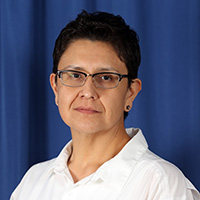September is National Suicide Prevention Awareness Month, which includes National Suicide Prevention Awareness Week, September 9-15, and World Suicide Prevention Day on September 10. During the month of September organizations highlight suicide prevention efforts by advocating for prevention strategies and networking to share resources and information.
Studies by the Center for Disease Control and Prevention show that suicide rates are rising. The rate of suicide has increased more than 30 percent in half of the states across the United States since 1999, with approximately 45,000 lives lost to suicide in 2016 alone. Research has shown that more than half of people who die by suicide did not have a known mental health condition. The rate of suicide for American Indian/Alaska Native adolescents and young adults ages 15 to 34 is 1.3 times the national average. Suicide is the 8th leading cause of death across all ages among all American Indian/Alaska Native.
It is important for Native people to learn how to recognize and respond to suicide. Talking about suicide in an open and caring manner can help those who are thinking of suicide obtain services. Learn how to recognize and respond to suicide by paying attention to warning signs of suicide. If you notice any warning signs, starting a conversation with the person may save their life.
Share the National Suicide Prevention Lifeline number, 1-800-273-8255 (TALK) and be willing to assist the person with the call. Taking the person directly to help can be the best option to ensure they receive the help they need. Additional tips can be found at how to talk about suicide. Your willingness to listen and help can save a life.
It’s important for Native people to talk to health care providers to learn more about suicide and what treatment is available. The Indian Health Service Suicide Prevention and Care Program partners with tribal, federal and other organizations to create a safety net of interconnecting programming to increase effectiveness of services and to help individuals who maybe considering suicide.
The IHS would like to recognize and honor the impact of suicide on friends and family. It’s important that when we discuss prevention that we also realize that despite our best efforts, people still tragically choose suicide. For those who have lost a loved one to suicide and suffered the shock, grief and pain the IHS provides patient centered resources for suicide loss survivors.
Becoming aware of suicide prevention is important for all of us! Our people, our relatives may need help. Caring can save lives.
Related Content
National Suicide Prevention Lifeline



